
Which Fiat car cover should I use? is often the first question that comes up when an owner starts thinking seriously about protecting the car in the context of U.S. weather and parking habits. Whether you commute daily and park under the sun for a few hours or leave the car outside overnight, the dilemma between the two popular options, full-vehicle coverage (Full cover) or top-half coverage (half cover), usually lasts longer than expected. The reason is that each solution has clear strengths while real-life situations are incredibly diverse: heavy spring pollen, tree sap at noon in summer, morning sea mist along the coast, quick showers after work, and even winter snow and road salt. This article dives deep into three core topics to help you make a decisive choice: a scientific overview of Full cover and half cover, the typical situations that make Full cover the right choice for Fiat, and the hot-sun short-stop quick-handling days where half cover excels.
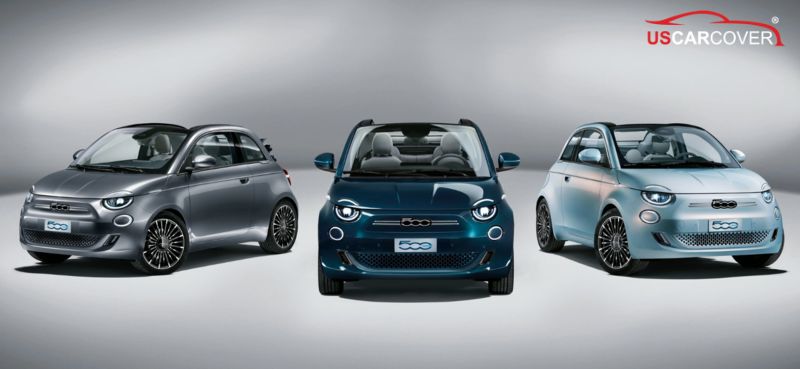
Related Articles: Ferrari Car Cover: Custom-fit, scratch-resistant, breathable, safe for paint
Overview of the two solutions: Full cover for entire-vehicle protection and half cover for top-half protection

When Full cover is mentioned, most users picture a microclimate space that hugs the entire Fiat from nose to tail, with elastic hems gripping the lower edges and, often, underbody straps that keep things stable in the wind. Half cover is more compact, covering the entire upper half including the windshield, side glass, roof, part of the hood, and the trunk lid, typically with mirror pockets for alignment. Its goal is fast protection for the zones that take the brunt of sun, vertical fallout, and direct thermal load. The difference seems obvious, but when you get into the physics acting on paint and cabin, the two solutions address different groups of problems and therefore reasonably coexist in real life.
At the root level, there are two subtle mechanisms that many owners overlook. The first is micro friction between fabric and paint when relative movement occurs. This movement is not only from your hands pulling the fabric but also from wind sneaking into hollow pockets and making the fabric flutter. With Fiat’s compact body, many soft curves, proud wheel arches, and rounded hood edges, high points appear where fabric can glide slightly if the cover is a generic loose size. The second is trapped moisture due to condensation, a result of day-night temperature swings, brief showers, morning dew, and sea mist. When the material is not breathable, moisture gets held between liner and paint, causing musty odor, mineral spotting, and even encouraging light corrosion at metal edges. From these two mechanisms, familiar consequences such as swirl marks, loss of visual depth in clear coat, water stains, slowly rippling PPF edges, and a heat-soaked cabin at noon are predictable.
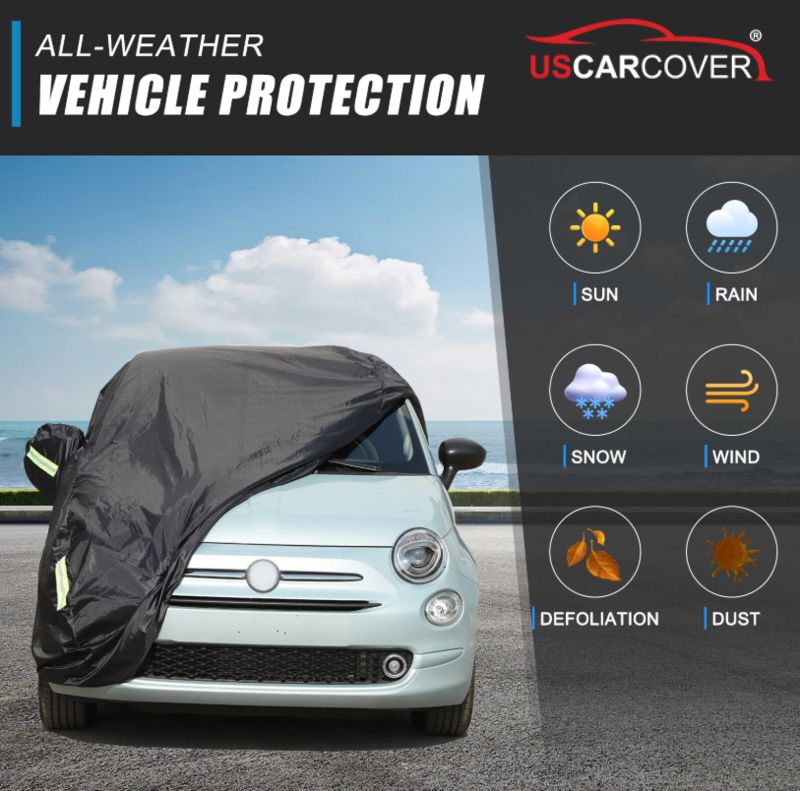
Full cover prioritizes isolating the body from the environment in the broadest sense. Because it covers everything, it addresses many sources at once: UV that ages clear coat, pollen across the sides, tree sap blown diagonally from the canopy, bird droppings that fall off center, fine dust in garages, and road salt gradually caking around the wheel arches. The direct result is a more stable paint surface, less buildup of that invisible “sandpaper” layer of grime, and a significant reduction in wind-induced repetitive friction when the cover is patterned to fit the body’s geometry precisely. The tradeoffs to manage with Full cover are handling time and the discipline of clean and dry before covering, but those are reasonable costs for peace of mind during long or overnight parking.
Half cover exists to solve the vertical fallout group and the heat problem in short-stop scenarios. When you park under midday sun, the upper half is where radiation is brutal. Half cover creates shade for glass and roof, noticeably reducing cabin temperature when you return, and it effectively blocks pollen, tree sap, and bird droppings that fall straight down. Because you do not need to pull fabric along the sides, the process is fast and significantly reduces the risk of lateral dragging. The limitation to accept is that the flanks, wheel arches, and lower edges are not covered, so in prolonged rain, strong wind, or snow season, half cover cannot fully substitute for Full cover’s whole-body shield.

From a solutions perspective, both types need the same technical backbone to do their job: custom-fit to eliminate excess movement, an ultra-soft liner to mitigate friction, breathable material so vapor escapes rather than being trapped, and recessed seams with soft hems so there are no hard ridges rubbing on panel edges. Only with this foundation can Full cover truly protect comprehensively and half cover deliver the “fast yet safe” value on busy days. Keywords such as Fiat car cover, Fiat full cover, Fiat half cover, breathable car cover, scratch-resistant car cover, custom-fit Fiat cover, and protect Fiat paint should appear naturally in the content because they reflect what users actually search for.
Related Articles: Bentley car cover: luxury, quality, finesse even while the car is covered
When Full cover is the right choice for Fiat
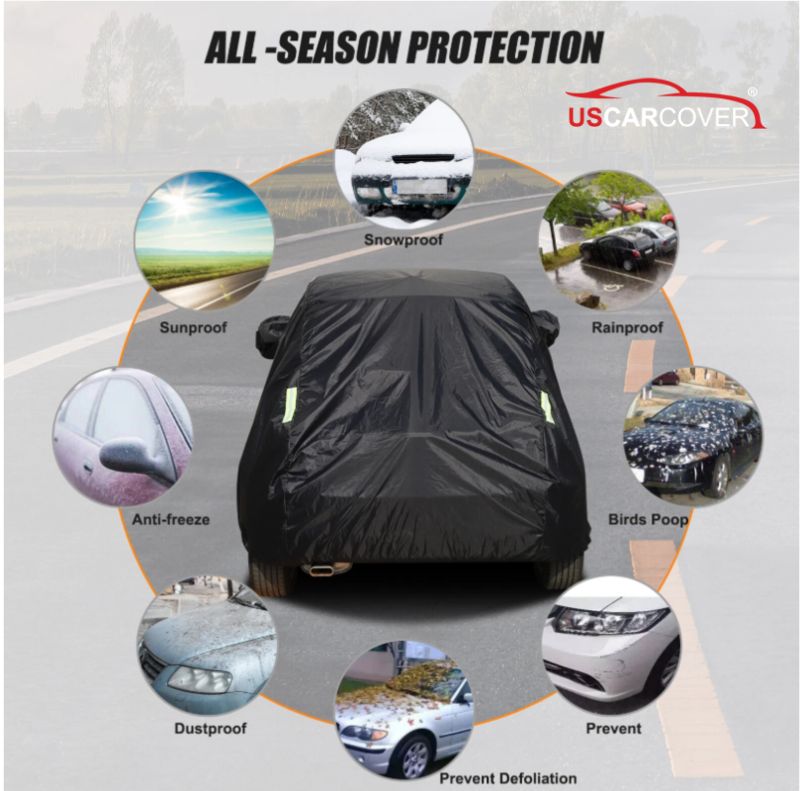
Most of the days when you need Full cover are the days the environment has enough variables to turn a clean car into one that needs polishing after just a few months. The most common scenario is overnight parking or long outdoor stays. In the Sun Belt, UV and high surface temperatures do more than fade clear coat depth; they also accelerate how grime, tree sap, and mineral water imprint. Along the coast, fine sea mist settles on both the sides and around wheel arches in the morning and, if not rinsed before driving, spreads salt all over the body. In the Snow Belt, road salt splashes up the sides, holds moisture at metal seams, and causes odor and staining if you throw on a sealed, nonbreathing fabric. All of this is predictable, and Full cover is the most complete answer when you do not want to rely on luck.
The reasons Full cover excels in these scenarios are coverage scope and aerodynamic stability. When the cover fits tightly and has underbody anchors, wind has few paths to create hollow pockets. That limits repetitive movement between fabric and paint, especially at proud crowns such as wheel arches and hood edges where Fiat’s rounded lines easily reveal micro swirls over time. Because the sides are enclosed, Full cover also blocks dust and fine particles depositing from crosswinds, something half cover simply cannot handle. A visible benefit is that after a windy, rainy night you do not need to wipe down the sides just to re-cover or drive off, saving time and reducing unnecessary mechanical contact with the paint.
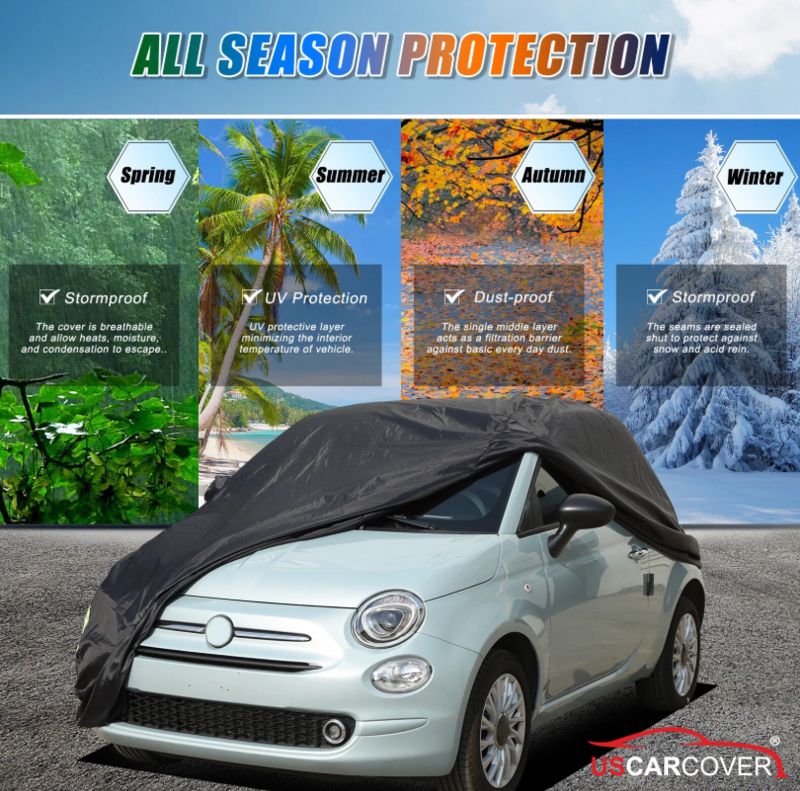
For Full cover to do its job properly, the solution is not “buy the thickest and most sealed.” The core is custom-fit for Fiat, with mirror pockets placed correctly, proper drop at the tail, elastic hems that hug lower edges, and underbody straps for windy regions. An ultra-soft liner and recessed seams remove the hard-ridge sensation, while breathable fabric lets vapor diffuse outward. In overnight rain or heavy dew, this prevents trapped moisture and mineral rings, something a plastic-like sealed fabric tends to worsen. If your car has PPF or ceramic, these details matter even more because film edges and hydrophobic coatings need gentle, stable interaction rather than long-duration rubbing.
The consequences of using Full cover incorrectly usually come from haste. Covering when the car still has grit after a long day, yanking sideways when the fabric snags at the mirror, storing the cover damp in the trunk, all of these erase the technical advantages of a good cover. The fix is to turn small steps into habits: shake off loose debris on the outside of the cover, ensure the car is clean and dry, set the nose first, align mirror pockets, let both sides fall naturally, then secure the hem and underbody straps. If the cover is waterlogged after rain, air dry it before reuse. Once this routine becomes second nature, Full cover provides a sense of security that is hard to replace, especially in demanding outdoor car cover conditions.
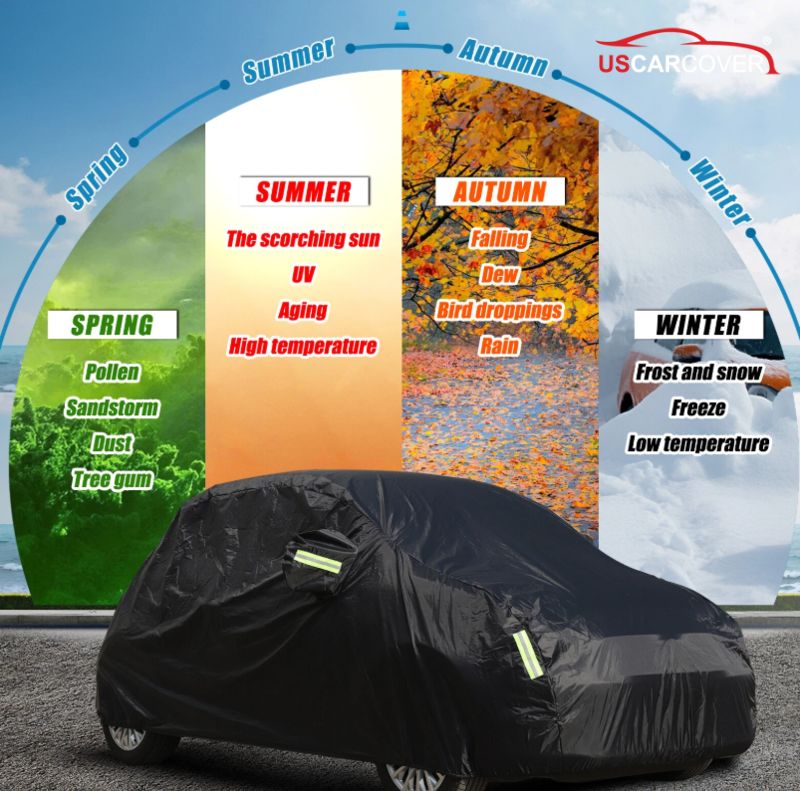
Related Articles: BMW Car Cover Why a car in the garage still deteriorates and how to stop it at the source
When half cover is more suitable for Fiat

There are days when convenience decides everything. You hit three appointments in the morning, park at the office lot for two hours at noon, stop by the grocery store for forty minutes, then move on. Each short stop is a chance for sun to bake the glass and roof, for pollen to blanket the top, for a sudden bird drop, for tiny beads of tree sap to land. In that rhythm, half cover is the true “instant protection” tool for the zones most directly attacked. You pull out the cover, cap the upper half, set the mirror pockets, pull the elastic edges snug, and you are done in seconds. When you return, the cabin is noticeably cooler, the glass is not streaked with droppings, and you lift the cover cleanly, shake it, and go.
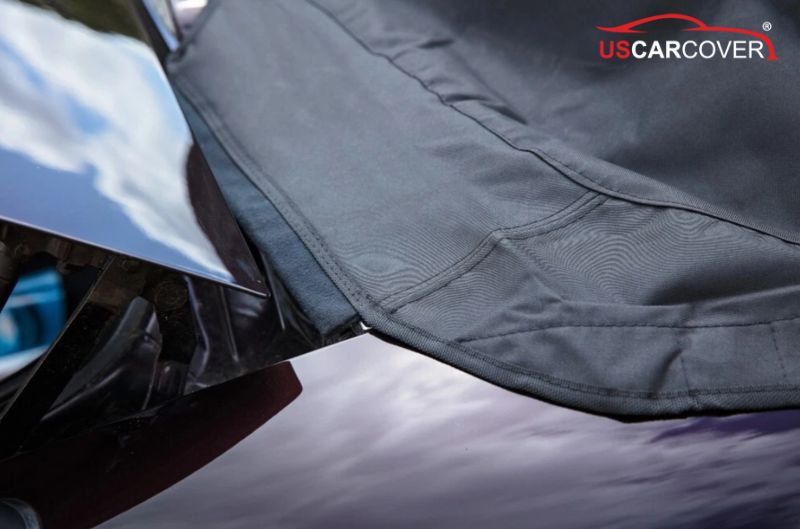
The reasons half cover excels in short-stop scenarios are minimal handling and the way risks are oriented. Many swirl marks do not come from wind or rain; they come from hurried sideways dragging of fabric along the flanks. Half cover eliminates most lateral movement on paint because you do not need to “pull along the body.” At the same time, the vertical fallout group is exactly what half cover blocks best: direct sun, pollen, sap, bird droppings, and fine dust settling from above. The positive outcome is that you reduce full washes just because of a few spots on the glass, saving time and cutting needless mechanical contact with paint.
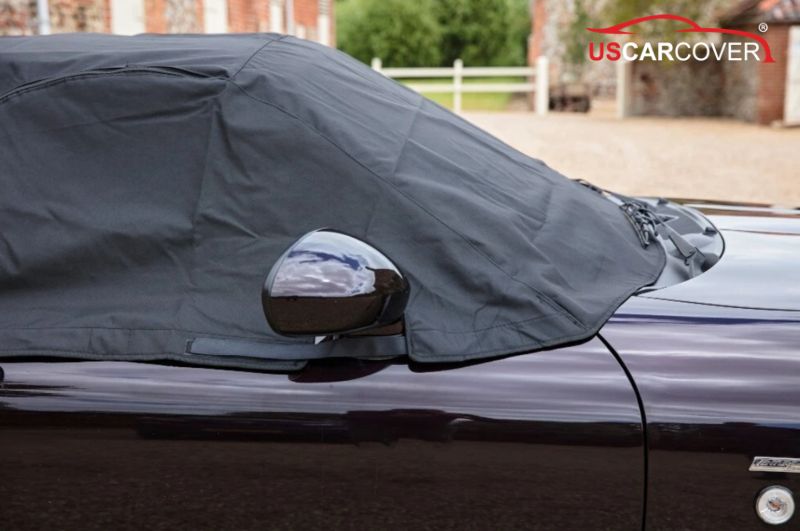
Naturally, half cover has built-in limits. Because it does not cover the sides and wheel arches, half cover will not stop muddy splashes after a shower, road salt buildup during driving, or crosswinds pushing dust into the flanks during long parking. The fix is not to force half cover to do what it is not designed for, but to combine according to context. In a hot summer, use half cover for daily commuting to reduce heat and block instant fallout; when you know you will park overnight or for days, switch to Full cover. In coastal areas, half cover is still useful for short windows of time, but rely on Full cover to manage sea mist settling around the body. For soft-top Fiat models, a good half cover that shields glass and roof fabric reduces UV aging during short stops; for long or harsh outdoor parking, Full cover brings comprehensive reassurance.

To let half cover deliver its intended value, the specs do not differ much from Full cover. A custom-fit upper section with mirror pockets keeps the cover from drifting in the wind. An ultra-soft liner ensures the contact surface does not create coarse friction with glass and paint, while breathable material avoids moisture trapping when covering after a brief shower. The correct routine is still clean, dry, gentle. Before capping a half cover, use a quality microfiber towel to flick away larger grit on the glass, set the cover down, then pull it snug according to its shape. Avoid strong lateral dragging because the goal is quick and safe, not “tarp spreading.”.
The result of correct use is daily relief. The interior is not heat-soaked, the glass is free from sap or droppings stains, and the drive after work feels better. More importantly, the painted sides are exposed to fewer rushed, improper wipe-downs triggered by a few upper-surface messes, indirectly lowering the risk of swirl marks created by hurried handling.
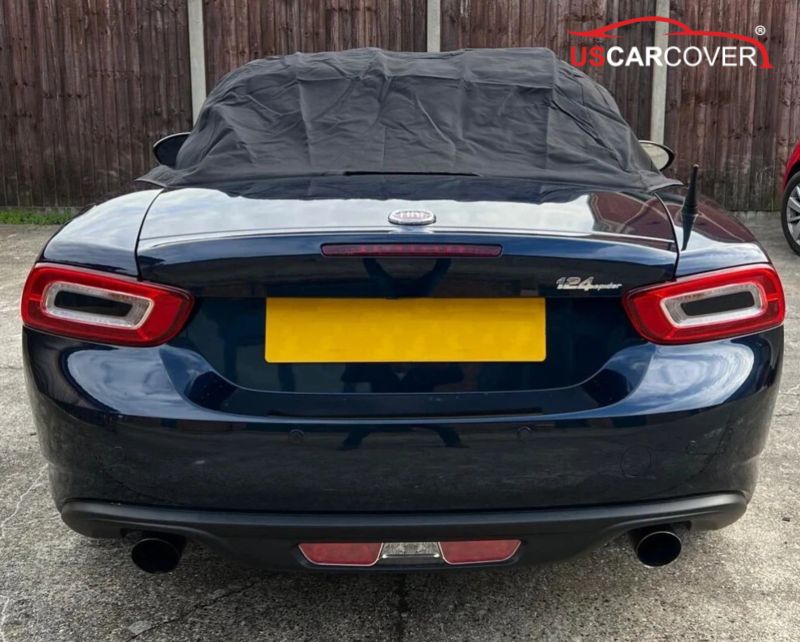
Related Articles: Cadillac car cover: protect against dust and sand, tree sap, and animals, keep scratches away
Paint-safe usage for both Full cover and half cover

A good cover only completes half the job. The other half lives in how you use it. Whether you choose Full cover or half cover, the universal principles are clean, dry, gentle, stable, and ventilated.
Before covering:
Spend two minutes removing friction and moisture traps. Wipe loose dust with a quality microfiber towel, avoiding aggressive circular rubbing on heavy dust that can create micro swirls. If you just drove through rain or a salted stretch, rinse lightly and let the car dry before covering. Quickly check the liner, shake off any embedded grit so particles are not trapped between liner and paint.
While covering:
Set the nose end first to orient your motions. For Full cover, align mirror pockets, then let both sides fall according to the fabric’s natural drop rather than pulling sideways. Finish by seating the elastic hem along the lower edges and fastening underbody straps for outdoor windy parking. For half cover, cap the roof and glass first, align the mirror pockets, then pull the elastic edge snug around the upper half so wind cannot sneak in at the edges.

When removing:
Shake off the exterior lightly so dust falls away, then lift and fold in sections so the outside does not press into the liner. Avoid dragging the cover laterally across paint because that movement creates repeated friction. If the cover is wet from rain or heavy dew, air dry it completely before storage to prevent mildew and odor.
Storage and cleaning:
Clean the cover regularly according to the fabric’s care guidelines. Avoid harsh chemicals that stiffen fibers or bleed dye into the liner. Store in a breathable bag in a dry place, and do not compress it while damp. Periodically inspect seams and hems. If you feel stiffness or fraying, address it early so the hem does not become a hard edge that rubs.
These habits are the bridge that turns theoretical scratch resistance and moisture management into daily, real results. When clean, dry, gentle, stable becomes second nature, both Full cover and half cover deliver exactly what they were designed for.
Related Articles: Bugatti car cover: Protection for Event Days and When Transporting by Trailer
FAQ

Does half cover suffice for a 2 to 4 hour office lot stay?
- In most cases, yes. Half cover shields glass and roof from direct sun and blocks vertical fallout like pollen, bird droppings, and sap. The cabin is cooler when you return, and you reduce full washes triggered by upper-surface mess. If the lot has heavy sap and you park for too long, consider switching to Full cover.
Can Full cover scratch paint in strong wind?
- If the cover is custom-fit, with mirror pockets correctly placed, elastic hems used, and underbody anchors secured, the fabric is very stable. Repetitive friction usually comes from loose, oversized covers or from covering a dirty car. Keep clean and dry handling and use gentle motions to minimize risk.
If my Fiat already has PPF, which type should I favor?
- Both are safe if the liner is non-bleeding, ultra-soft, and the cover fits correctly. Full cover has the advantage of distributing loads and limiting contact at film edges during long parking. For short daytime stops, half cover remains useful for the upper half without pulling along body panels
Do I need both Full cover and half cover?
- If budget allows, the combination is optimal: half cover for urban short stops and Full cover for long or overnight parking or harsh seasons. If you choose only one, base the decision on your primary parking duration and local environment

Related Articles: Dual-Ghia car cover for long-term storage: quick-dry, no musty odor, no soft-top mildew
If protecting a Fiat is a series of small decisions repeated daily, then choosing a Fiat car cover between Full cover and half cover is the foundational first step. Full cover is suitable when you park long, overnight, and face a combined influence of UV, sea mist, rain, fine dust, and road salt, requiring a comprehensive, aerodynamically stable shield. Half cover is the agile tool for an urban rhythm of short stops, blocking vertical fallout and reducing cabin heat with minimal handling. Both only truly perform when they share four technical foundations: a fit tailored to Fiat, an ultra-soft liner that resists real-world scratching, breathable fabric that manages moisture correctly, and recessed seams with soft hems so no hard ridges rub along panel edges. When you understand causes, face the consequences, and patiently apply clean, dry, gentle, stable solutions, the dilemma fades. In its place is a simple, consistent protection habit that keeps the Fiat clear coat crisp, the interior comfortable, and the car feeling “ready” every time you open the door. With the right awareness and a context-appropriate choice between Full cover and half cover, you turn a car cover from an accessory into a foundation for preserving your Fiat’s value for years to come.
